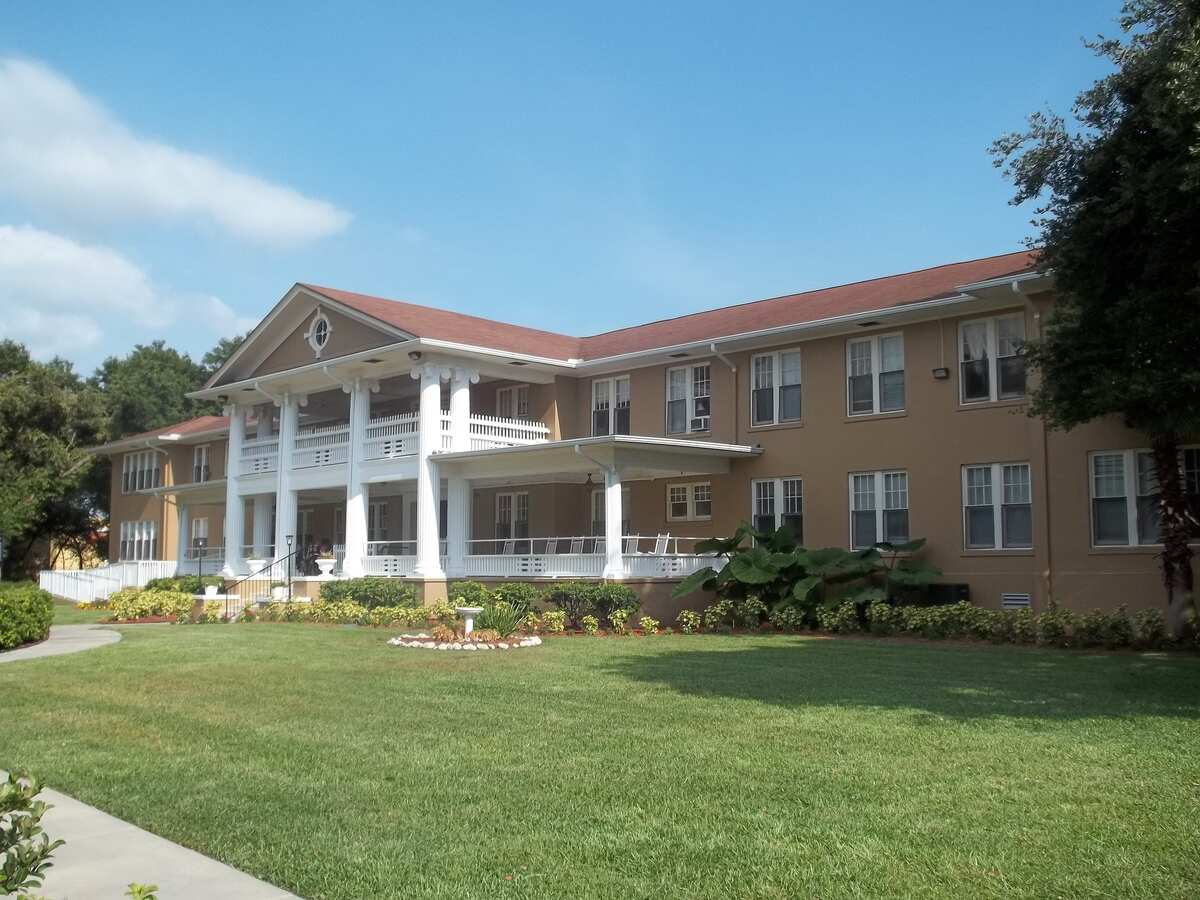
Keeping a beautiful lawn in the subtropical Tampa – St. Petersburg area can be a bittersweet experience. The winter and spring are pleasant but dry. The summer is wet and hot. Most soil is sandy and tropical storms often visit, sending salty spray all over your yard. But you can do it! All you need is some good, hands-on lawn care tips for the Tampa Bay area to help you. And you can get them right here!
- 1. Know Your Tampa Bay Grass
- 2. Seed Turfgrass from March to July
- 3. Leave Grass Clippings on Your Tampa Lawn
- 4. Keep a Weed Control Schedule
- 5. Mow Like a Pro (or Hire One to Do It)
- 6. Align with the Tampa Bay Water Restrictions
- 7. Collect Water in Rain Barrels
- 8. Keep the Lawn Healthy to Prevent Pests
- 9. Watch for the Mosaic Virus in Floratam Lawns
- 10. Hurricane-Proof Your Tampa Bay Lawn
- FAQ
1. Know Your Tampa Bay Grass
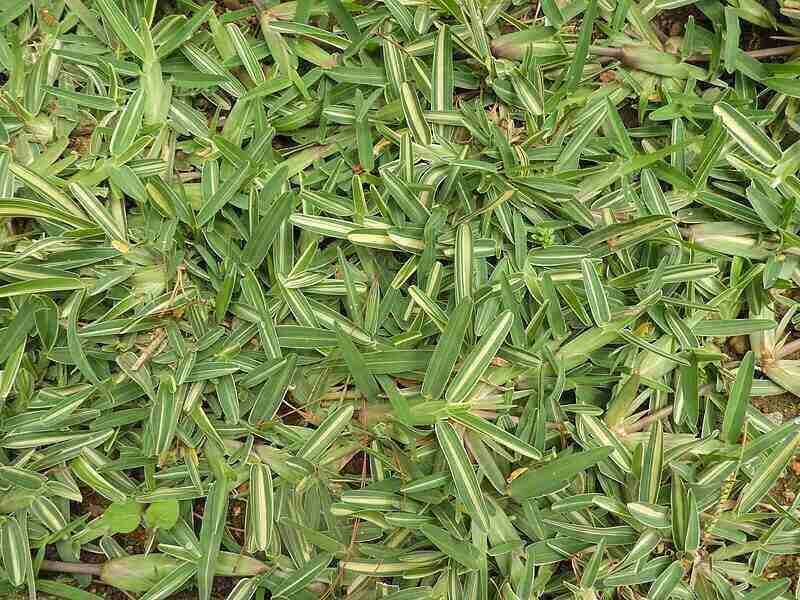
Photo Credit: Yercaud-elango / Wikimedia Commons / CC BY-SA 4.0
St. Augustine, Bahia, Bermuda, and Zoysia grass are the most popular grasses in the Tampa Bay area. Here’s what you need to know about them to choose the right type and maintain it correctly:
- St. Augustinegrass is easy to establish and the most shade-tolerant warm-season grass (you can plant it under bushes or trees). It also has low resistance to heavy traffic and is a high-maintenance choice.
- Zoysiagrass needs less mowing and fewer fertilizers but is more expensive to establish. It grows thick and dense, with a manicured look, is less prone to weeds, and has good traffic resistance.
- Bermudagrass has high traffic resistance, suitable for family lawns with kids and pets playing outdoors. It is a fast grower that easily overcomes weeds, must be mowed often, and can become invasive.
- Bahiagrass is low-maintenance, with good resistance to insects, diseases, and drought. It’s inexpensive to install but doesn’t grow as dense and uniform as other grasses, having a more natural look.
2. Seed Turfgrass from March to July
The warm winter in Tampa Bay makes it possible to seed and install sod, sprigs, or plugs on your lawn almost all year round. But, according to the University of Florida, the best time to plant grass is from March to July.
You can easily plan it as part of your spring lawn care schedule so the new grass benefits from the spring lawn clean-up and fertilization. This way, the grass will develop a robust root system and good resistance to drought and cold by winter.
3. Leave Grass Clippings on Your Tampa Lawn
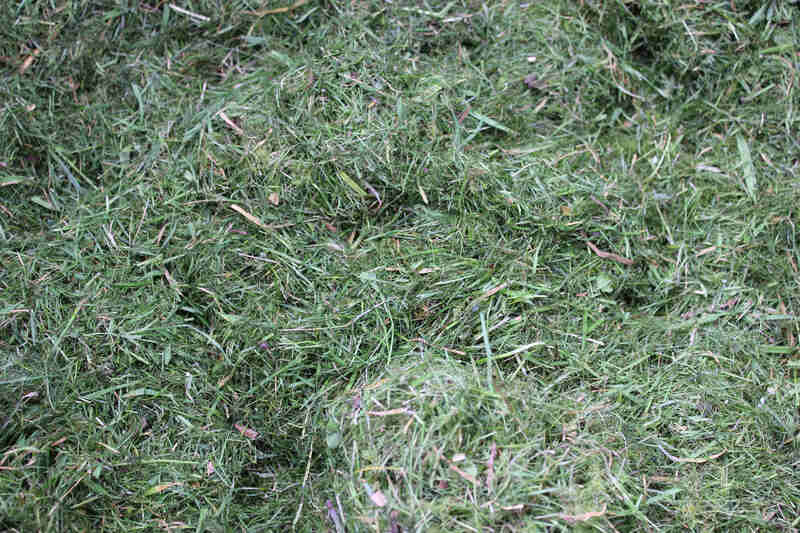
Grass clippings are excellent, eco-friendly, free-of-charge nitrogen sources for your lawn.
Nitrogen is essential for green grass. But it is also the primary pollutant contaminating Tampa Bay area waters. Hillsborough County has banned using nitrogen and phosphorus fertilizers in the rainy season, from July to September, to keep pollution under control.
A smart way to keep your grass well-fed during this time is by fertilizing your Tampa lawn with what nature offers – grass clippings. They release the nitrogen slowly, preventing leaching, and also offer necessary micronutrients that synthetic fertilizers lack.
4. Keep a Weed Control Schedule
Tampa Bay lawns deal with stubborn summer and winter annual weeds. The best way to keep them under control is to spread pre-emergent herbicides on time before their seeds germinate, which is:
- February and early March for annual summer weeds. Spot-spray young weeds from March to April with a post-emergent herbicide.
- October for annual winter weeds. November to early February, spot-treat young weeds with a post-emergent herbicide.
To ensure season-long weed control, make a second application 6 to 9 weeks after the first.
Warning! Apply pre-emergent herbicides only if you previously had problems with annual weeds and only on a lawn that has been established for over a year. Chemicals can harm new growth.
5. Mow Like a Pro (or Hire One to Do It)
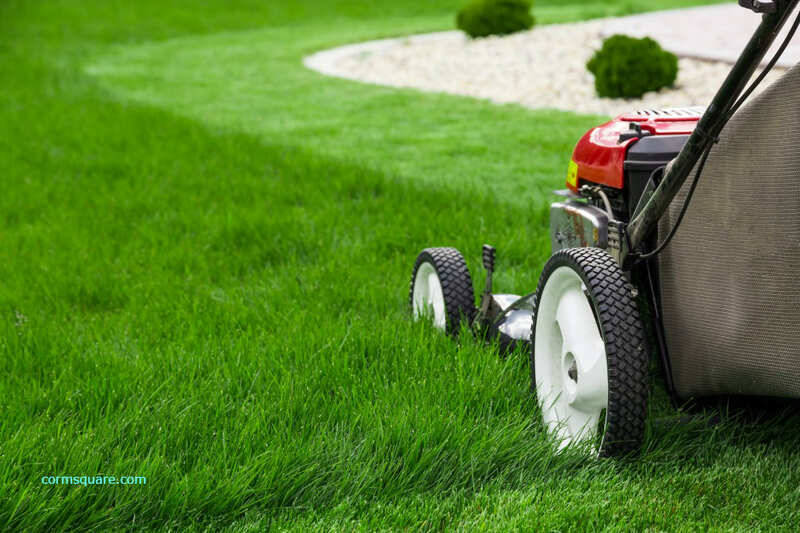
Keeping the proper mowing height is essential for a healthy lawn. When cutting grass blades too short, the turfgrass is more vulnerable to stress factors like:
- Low or high temperatures
- Pests
- Fungal diseases
Leaving it too tall exposes the grass to excessive moisture and fungi. Here are the recommended mowing heights for the most popular Tampa Bay grasses:
| Turfgrass Species | Optimal Mowing Height (inches) |
| Bahia | 3.0 – 4.0 |
| Bermuda | 0.5 – 1.5 |
| Centipede | 1.0 – 2.0 |
| St. Augustine | 3.5 – 4.0 |
| Zoysia | 1.0 – 2.0 |
Pro tips for mowing a Tampa Bay lawn:
- Cut no more than ⅓ of the blade height to help the grass heal fast. Keep the mower blades sharp.
- Mow in the evening during summertime to protect freshly cut grass from exposure to heat and direct sunlight.
- Avoid mowing after rain while the soil and grass are wet. Wet grass often lays down, making it hard for the lawn mower blades to grab it, and its wheels can slide on the grass.
Lawn care professionals know it all. Finding a local lawn care service to prune the grass properly is an excellent way to take care of your lawn if you lack the time to DIY.
6. Align with the Tampa Bay Water Restrictions
To conserve water, year-round lawn irrigation is limited to twice a week in the Tampa Bay area. Irrigation hours and specific watering restrictions vary depending on your county and city:
- In Pasco County, Hillsborough County, and Tampa, homeowners can water their lawns between 6:00 p.m. and 8:00 a.m.
- Homeowners in Clearwater and unincorporated Pinellas County can irrigate their lawns between 4:00 p.m. and 10:00 a.m.
- The City of St. Petersburg allows watering established lawns and landscapes from 5:00 to 9:00 a.m. or 7:00 to 11:00 p.m.
Each address has specific watering days allocated during the week. Check with your local government website to see your watering days.
Pro tips for lawn watering in the Tampa – St. Petersburg area:
- Collect rainwater during the wet season using rain barrels or a water tank. You can reduce water bills considerably.
- Install a rain sensor on your sprinkler system to stop watering when it rains, even if you’re not home.
7. Collect Water in Rain Barrels
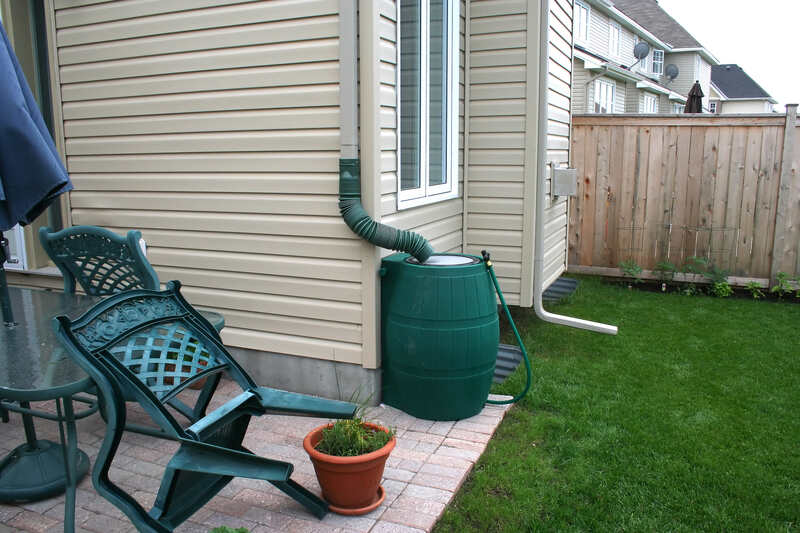
There’s so much rainwater falling during summer all over the Tampa Bay area that it is a colossal waste to irrigate the lawn with tap water. You just need rain barrels or a water tank to collect rainfall from your home’s roof and gutters.
This practice is also an excellent hurricane-proof measure for your landscape, reducing lawn flooding and water pooling. It also lowers your water bills.
Since water harvesting is part of the Florida Friendly-Landscape Program, you can attend workshops at your local UF Extension Office, which will teach you every detail you need to know.
8. Keep the Lawn Healthy to Prevent Pests
Every lawn owner deals with chinch bugs, grubs, armyworms, mole crickets, fire ants, and other Tampa Bay pests from time to time. These annoying critters can wreak havoc on your grass if neglected. They:
- Damage roots by tunneling
- Suck the life (literally) out of grass blades
- Eat roots, stems, and blades
- Leave deadly toxins behind
The best way to protect your turfgrass is to prevent infestation by following these steps:
- Mow correctly and leave the grass taller during summer.
- Avoid overwatering and underwatering. Both create attractive conditions for creepy crawlies.
- Dethatch when the layer is thicker than 1 inch. Thick thatch makes an excellent habitat and food source for these little buggers.
- Keep the lawn clean. Remove branches, fallen leaves, and all debris that come along when hurricanes swing through Florida. Otherwise, they’ll make seductive shelter and food for unwanted pests.
Of course, there’s always spreading pesticides. Once the lawn is infested and shows thinning areas or yellow, brown, or bare patches, you might need to apply an insecticide. To ensure the best lawn care, work with a local pest control company to solve the problem.
9. Watch for the Mosaic Virus in Floratam Lawns
First identified in Pinellas County, Florida, in 2011, the Sugarcane Mosaic virus causes lethal viral necroses (LVN) in the Floratam cultivar of St. Augustine grass. The disease kills Floratam lawns in two or three years from infection. It also infects, but does not kill:
- Other St. Augustine cultivars
- Bahiagrass
- Bermudagrass
- Paspalum grasses
Zoysiagrass doesn’t seem to be affected.
Signs to look for:
- New heavy weed infestation
- Yellow and then necrotic spots on Floratam grass blades
- A slight “bronzish” tinge on the lawn.
What can you do? There is no effective treatment for the lethal viral necrosis on Floratam lawns. Since the virus spreads through the grass sap left on lawn equipment and tools, the best preventive method is to sanitize them thoroughly. According to the University of Florida, the two most effective disinfectants to use are:
- DuPont Virkon S disinfectant (2% solution)
- Household Bleach solution (1 part to 9 parts water)
As for infected Floratam lawns, the primary strategy is to replace them with another St. Augustine cultivar that is resistant to this virus, such as Palmetto or the new CitraBlue.
10. Hurricane-Proof Your Tampa Bay Lawn
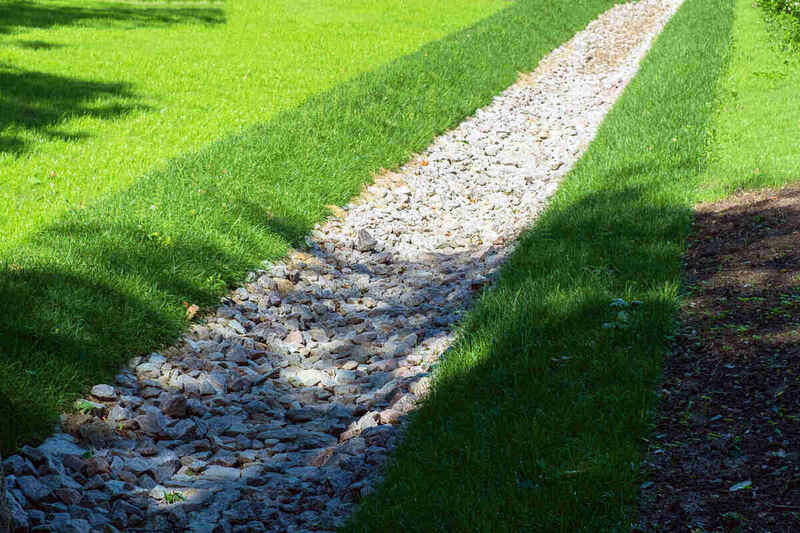
You might think that so short and close to the ground, your turfgrass is safe from storm surges. But it’s not. Fallen branches, flooding, water pooling, salt spray, and soil erosion can damage the grass. To protect the lawn from hurricanes and enjoy a green lawn over the wet season, consider the following:
- Trim and prune your trees correctly.
- Fill low spots with topsoil and level the ground to reduce water pooling.
- Install French drains, a water garden, a small pond, or rain barrels to collect stormwater and reduce the amount that reaches the lawn.
- Keep the gutters and storm drains clean and clear to limit lawn flooding.
- Build retaining walls in areas with steeper slopes exposed to erosion.
- Use core aeration to improve soil drainage.
FAQ About Tampa Bay Lawn Care
Tampa Bay lawns are mostly warm-season grasses that thrive in full sun. Some of them, like Zoysia, can tolerate some shade, but not as dense as large shade trees make under their canopy.
Consider ground covers that tolerate shade, like mondo grass, swamp fern, or Algerian ivy, to create a beautiful green mass in shady areas. You can also choose to apply some decorative mulch.
With a dry and a wet season changing gears across the year, lawn owners in Tampa Bay need to adapt to what’s in front of their eyes. Local water restrictions limit watering to twice a week, but whether you irrigate twice or just once a week and the amount of water you use depends on how dry the soil is.
The best fertilizer for Florida lawns is a slow-release nitrogen formula. Organic is better because it also includes trace minerals that most synthetic fertilizers don’t include.
Enjoy a Thick Tampa Bay Lawn All Year Round!
A beautiful, healthy, green lawn improves curb appeal, increases property value, and makes summer heat easier to bear. Taking care of it is a great hobby and a relaxing way to spend time outdoors.
However, lawn care can be time-consuming and a lot of work if you’re doing all of it DIY. There are some excellent professionals in the area that can lend a hand. Find a trustworthy Tampa lawn care company and enjoy dense, thick grass without elbow grease!
Main Image Credit: Ebyabe / Wikimedia Commons / CC BY-SA 3.0